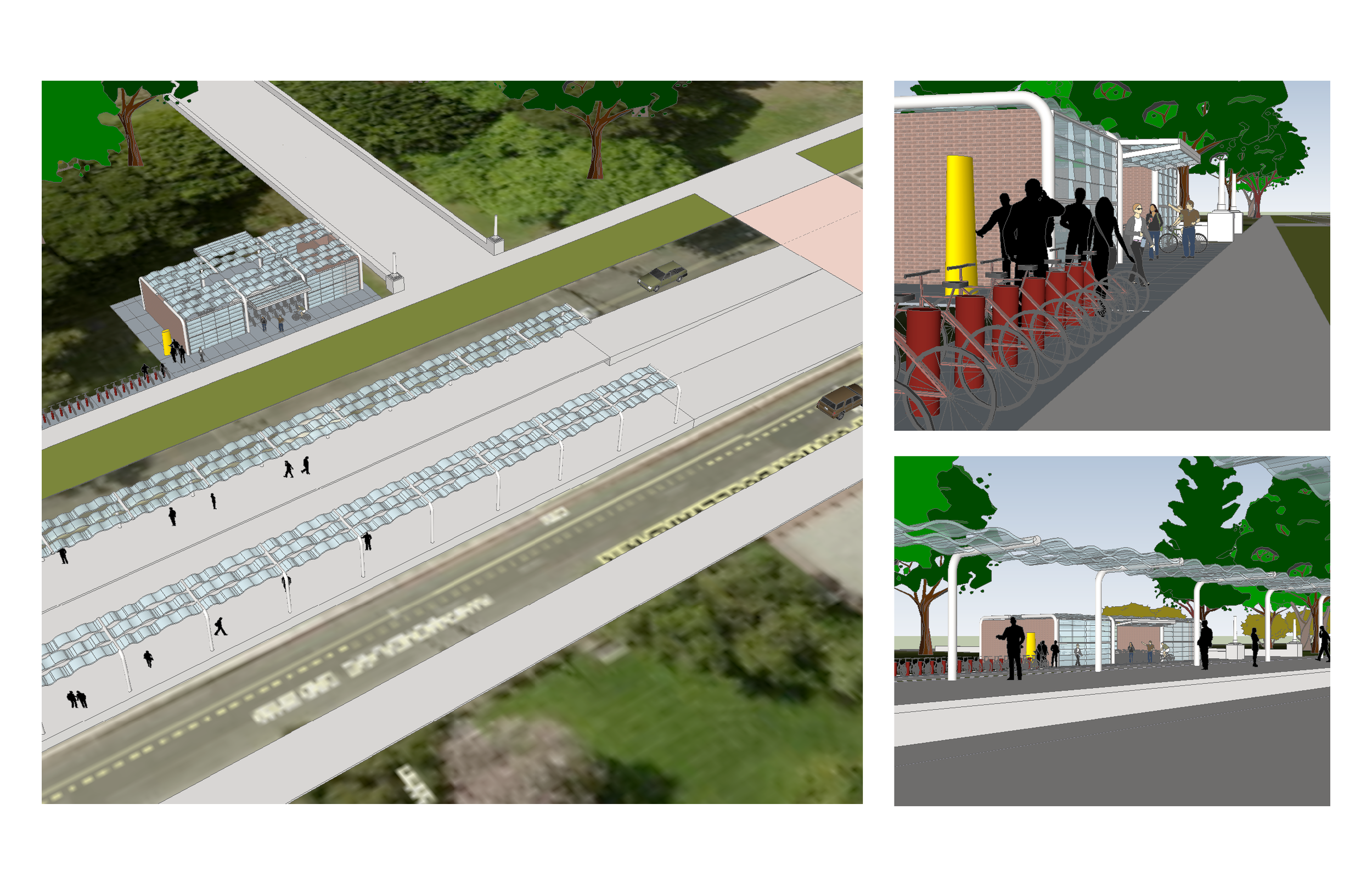
Exposition Light Rail
Transit Preliminary Engineering (2004) and Bike Share Hubs (2011)
The Exposition Light Rail was a collaborative design and planning process by architects, engineers and artists. While at Zimmer Gunsul Frasca, Siobhán worked with Metro engineers, artists at Cliff Garden Studio, and landscape architects at Meléndrez to develop the preliminary engineering design. Transit Oriented Development studies of 12 stations were developed to envision opportunities and incentives to attract new transit ridership and attractive hubs along the 8-mile alignment from DTLA to Culver City. At the time of study, Exposition Boulevard had an underutilized median with decommissioned Pacific Electric Railway tracks (1909-1953 as the Santa Monica Air Line). Today, the Expo Line is known as the E Line and has expanded to 15 miles, providing service to Santa Monica.
The artistic concept, "weaving a transit parkway" influenced the architectural form of the canopies, fencing, and retaining walls to provide a cohesive identity to the new infrastructure.
In 2011, Lyric served as Project Designer for Deborah Murphy on the Metro Call for Projects application in the Transit Capital category. The $2.2 million project cost involved the design of four bike share hubs at four Exposition Light Rail transit stations near USC and Exposition Park to provide better first and last mile mobility options. Each hub would essentially extend the reach of the transit system with a convenient, on-demand bicycle share, rental, repair, and storage facilities. As part of the project, Siobhán met with and presented preliminary designs to USC and Exposition Park stakeholders to get support for this project.
A 2,000 SF “main hub” was recommended for the Expo Park/USC Station with bicycle rental, storage, and repair provisions. The 23rd Street Station recommended reclaiming two parking spaces for 16 bike share docking stations and a kiosk. The hub at Jefferson/USC Station was envisioned an activated bike garden at the Galen Center plaza with 24 docking stations. This would provide integrated mobility for students and visitors to games and events.







